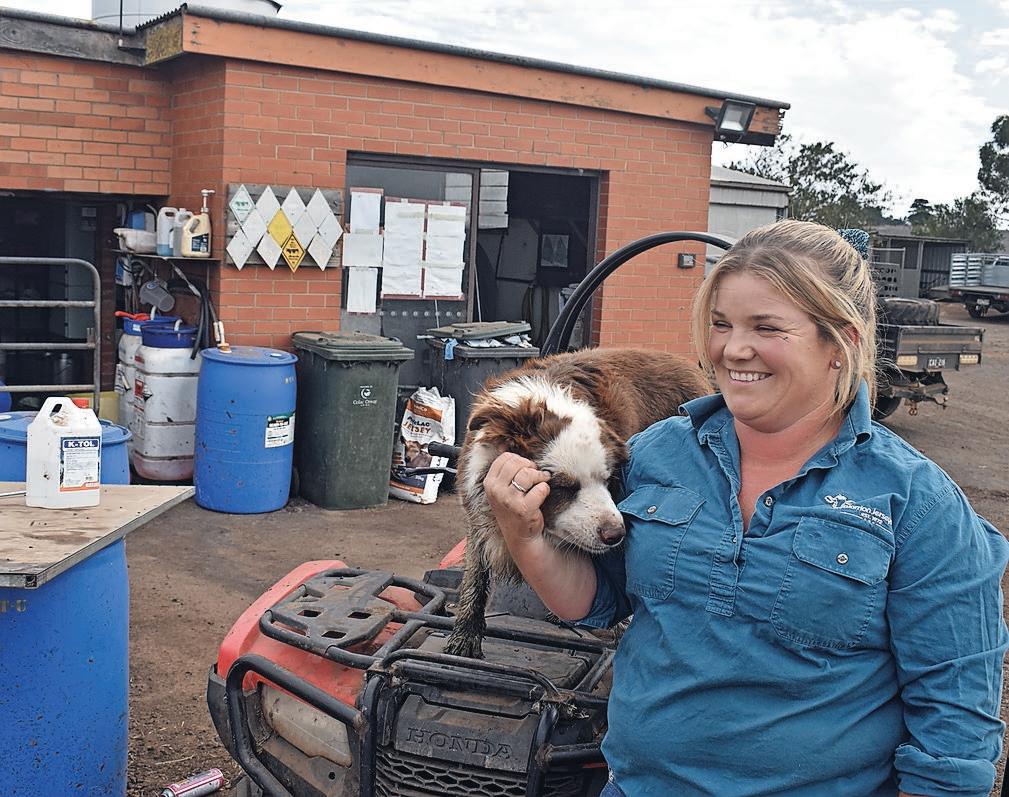WEST VIC REGION

THROUGH THICK AND THIN
Sarah Chant loves the farm life, despite the tough times. Page 3.


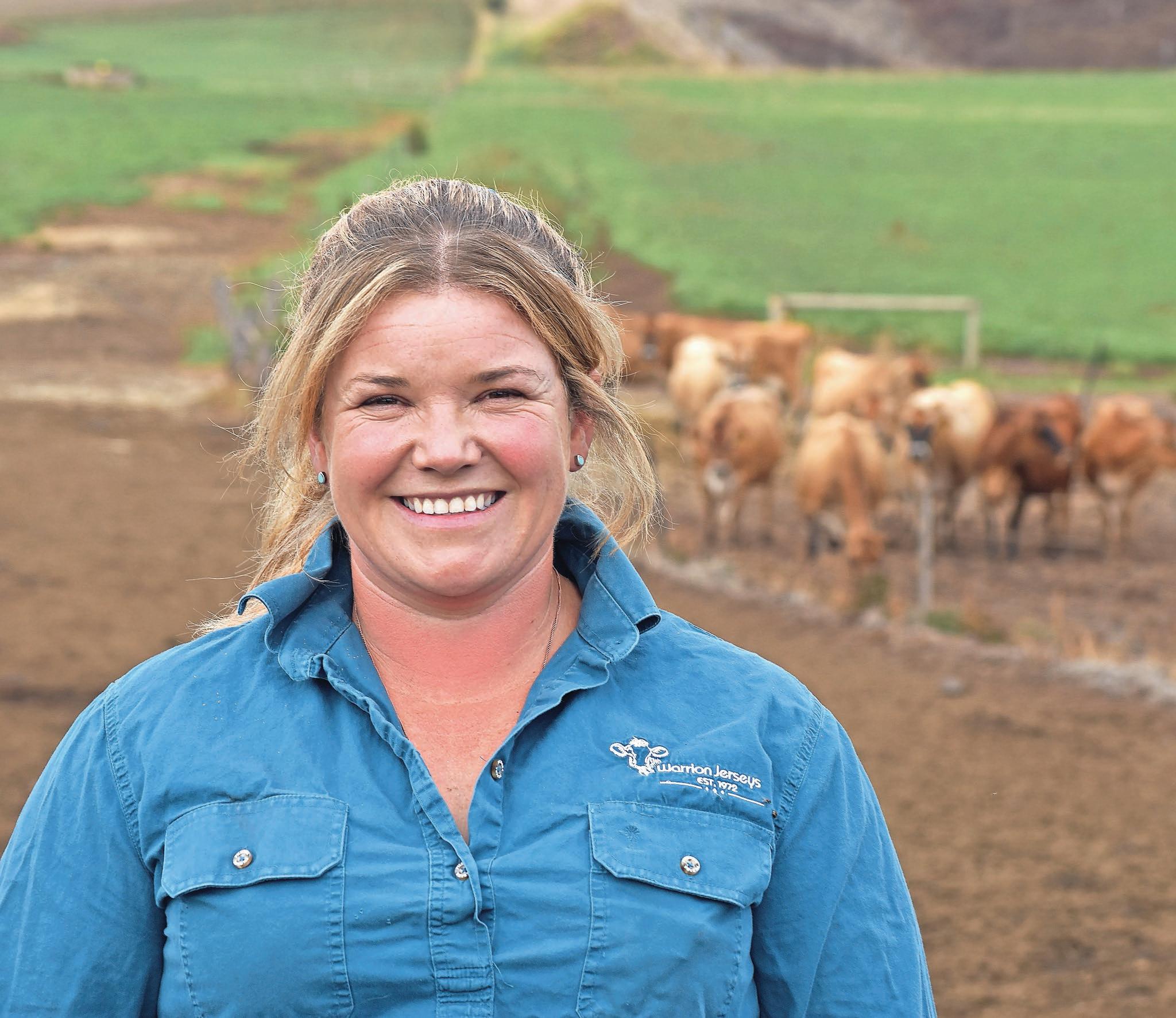


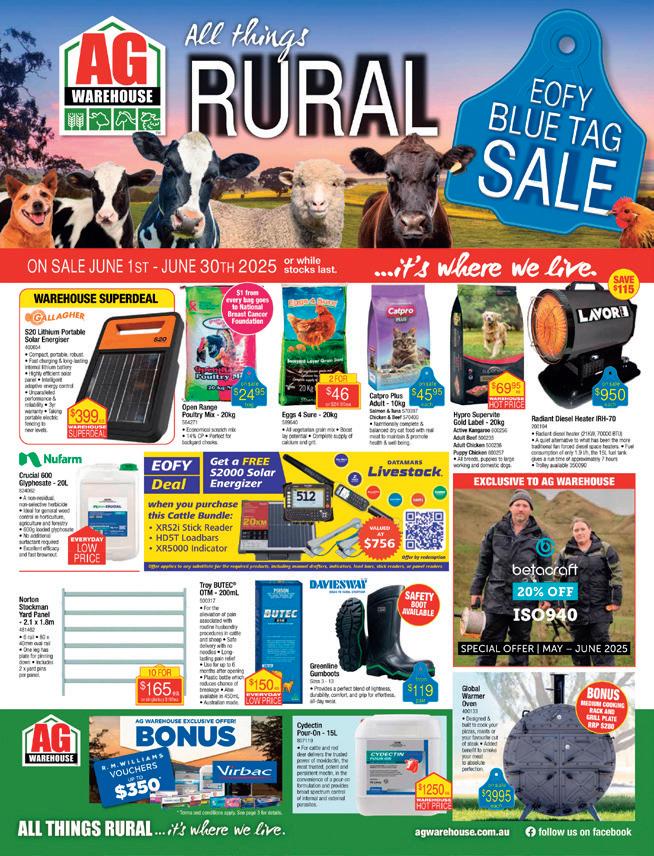
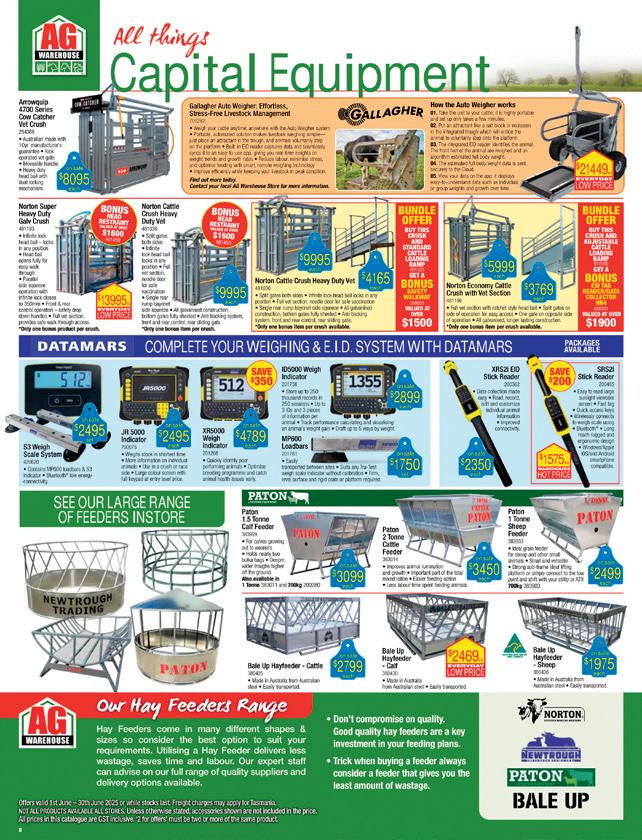
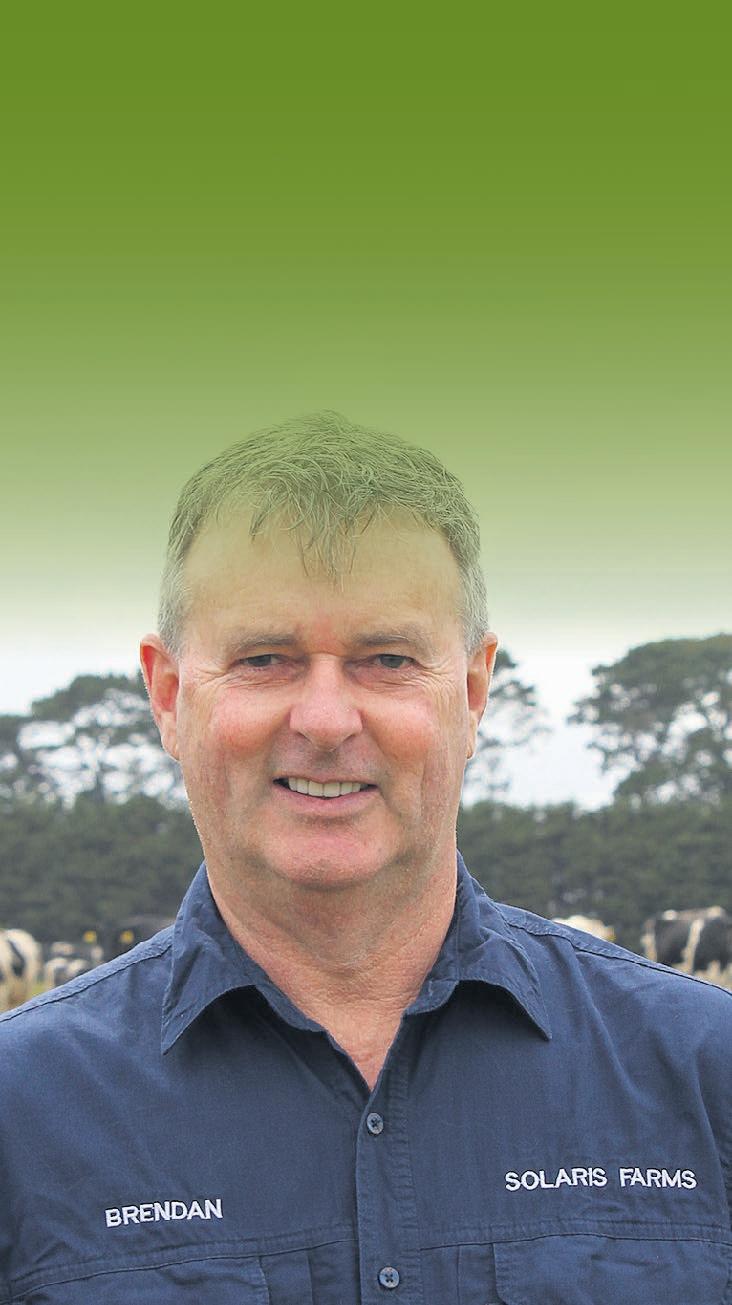



Sarah Chant loves the farm life, despite the tough times. Page 3.













BY BRENDAN REA
THIS DROUGHT is testing us all in ways we’ve never experienced before.
I’ve never seen anything quite like this — and I know I’m not alone in feeling that way.
My Allansford farm has now missed a spring, an autumn and another spring. My father is over 90, and even he can’t remember this long a stretch without rain.
Across our region, farmers are telling similar stories: it’s tough sourcing feed, enormous feed bills, and hours spent each day getting feed and in some cases water out to stock.
At Allansford, what used to be a half-day job for one person now takes two people all day.
In addition, every acre of the farm has been resown because the perennial ryegrass has died, something that has never happened before.
These are trying times — mentally and physically.
There’s a lot of pressure right now to make big decisions. And when things feel overwhelming, those decisions can sometimes be made too quickly.
Choices that can feel like solutions in the moment, can lock us out of options when the rain finally comes.
I’ve always held the philosophy of not making short-term decisions that could affect the long-term future. Not just for the existence of the farm, but for my own wellbeing.





This approach is something that’s helped me over the years. But that’s easier said than done, especially in times like this.
I’ve found that when I make decisions early, even small ones, I make better decisions.
I also make better decisions when I engage people early in my decision making.
Talking to the bank, the processor, grain supplier, nutritionist and agronomist, or even a trusted friend or adviser, can help.
It doesn’t make the challenges go away, but it helps take some of the weight off my shoulders. When I’m less stressed, I make better decisions, and I know that’s true for many of us.
This is not a normal season and it’s pushing a lot of dairy farmers to their limits.
Please don’t hesitate to reach out for support, it’s one of the best things you can do.

There are people and a community around you who genuinely want to help.
The WestVic Dairy team is working closely with the Dairy Industry Leadership Group and others to get the right support to where it’s needed.
Whether it’s help with planning, feed budgeting or just someone to listen, the WestVic Dairy team is here to help.
This season will be remembered for how hard it’s been. I hope it’s also remembered for how we pulled together.
Because while we’re all dealing with our own pressures, we’re not doing it alone.
Please take care of yourself and look after your friends and family. And don’t be afraid to reach out for support.
– Brendan Rea is the WestVic Dairy chair.



















Barongarook West farmer Simon Scott is finding flexibility is the key to survival in a tough season.
Over the past three years, Simon has dabbled in flexible milking times, returned to conventional twice-a-day milking and is now mixing it up again.
Starting in 2022, Simon spent the whole season milking three times in two days. Over 2024, he reverted to twice-a-day, because of the tough season before again opting for three-in-two early this year.
Now as Simon, along with the rest of south-west Victoria, endures one of the worst seasons in memory, he has been forced back to the more conventional twice-a-day milking.
“We had been three-in-two from the end of January to late April, but we’ve gone back to twice-a-day for the foreseeable future, just because we’ve got no grass,” he said.
“I’ve got to get grain into them to keep up production. I’d say we’ll have to keep up twice-a-day milking through to spring.
“There’s just not enough feed.”
Simon said the flexible approach had been the best way to counter the tough conditions.

“We’re flexible — we’ll do three-in-two when we can, but the season is just not playing ball. It looks like it’s going to get pretty bad.
“We’ll go back to three-in-two when the conditions are right.”
His three-in-two system involves milking at 6.30am every morning and around 3.30pm-4pm every second day.
“We dropped seven to eight per cent of milk solids’ production for the first year we did it, but that was balanced by savings in electricity, less wear and tear on the tracks and the cows, and you also have to value your time.
“There’s no doubt the cows were in better condition with three-in-two.
“It all adds up.”
The flexible milking routine is part of Simon’s shift to regenerative and organic farming, which also includes a move to multispecies pastures and a focus on flexible management, grazing and stocking.
Despite the region’s prolonged dry spell, Simon’s farm still has a green pick, and he said a lot of multispecies pastures were just waiting to take off with some rain.
“The older ryegrass pastures have


dried off a lot more, but the multispecies, especially those planted in the past two or three years, are still hanging on. The plants are still alive.”
DemoDAIRY Foundation has hosted forums and on-farm field days about flexible milking options to expose Western District farmers to a different approach to milking that has been shown to reduce
labour inputs, which is a big ongoing issue for dairy farmers, while not significantly impacting on production.
Any farmers interested in learning more about three-in-two farming can contact DemoDAIRY Foundation https://www.demodairy.com.au or contact DDF secretary Ian Teese on 0427 358 987 or itag@bigpond.com

BY RICK BAYNE
SARAH CHANT has had some tough years as a young female farmer making her way in the industry, but this season might be the toughest.
While thankful that part of her farm at Warrion, 20km north of Colac, is under irrigation, Sarah admits that margins are getting tight.
“Hopefully we start getting paid a bit more,” she said.
“The milk price looks good on paper, but it hasn’t kept pace with the costs of everything. When Mum and Dad were running the farm, a load of grain was $9000, now it’s $14,000 or $15,000.
“Power has doubled, a lot of things that went up over COVID never went back down. You can’t pay staff $20 an hour any more if you want someone good.
“The margins are getting tighter and tighter.”
She’s not alone in feeling the pinch.
“I know a lot of dairy farmer friends in their early 40s and they’re starting to wonder why they do it.
“They’re good farmers and they love farming, but you work seven-days-a-week and don’t have much of a social life, so you want to make some money.”
Despite the current challenges, Sarah isn’t about to give up.
Quite the contrary, she loves farming and would like to expand her business when conditions get better.
“If I gave up farming here, I’d just end up

milking for someone else. I love being with the animals all day and being outside,” Sarah said.
The 202ha farm with 53ha under irrigation is supported by a 40ha block 5km away for silage and young stock.
She’s now milking 270 Jerseys and one Brown Swiss.
“The irrigation using underground bore water gets us through the summer,” Sarah said.
“This season is bad enough as it is. I don’t know where we’d be without irrigation.”
The Warrion Jerseys stud was founded by Sarah’s grandparents in 1972 and continued by
her father Steven.
When Steven died in 2016, Sarah stepped up.
“When I took over, the hardest thing was the decision-making,” she said.
“I’d been on the farm for years, but taking over was quite a shock — sink or swim. I’d stew over every decision, but it’s second nature now.”
Sarah was just 24 when her father died.
“He’d been sick with cancer for a few years, so I had been doing the day-to-day management for 12 to 18 months, but he was still making the decisions until the day he died.
“It wasn’t all smooth sailing, but a lot of local farmers and friends of Dad’s would step in if I needed advice and call and check on me.
“I got a lot of industry support. Agronomists and nutritionists called in more often than usual to keep an eye on me and Jersey club members would be on the phone.”
While the Colac and Western District Jersey clubs have now merged, Sarah said her involvement had been “like a second family” and the community support continues today.
Continued on page 8




BY RICK BAYNE
YOU GET the impression with Brendan Rea that he’s as happy to be mentoring the next generation of farmers as he is to see a cow milking well in the dairy.
In his 45-year career as a dairy farmer, Brendan has seen his family farm near Allansford grow from 90 to 1050 milkers, but the WestVic Dairy chairman likes to look at the bigger picture.
“Along the journey, I have been fortunate to have the opportunity to mentor a lot of really good young people who have forged good careers for themselves in this industry,” he said.
“That has been a great joy to me.”
It’s the same with his WestVic Dairy role and other industry and community boards and committees.
“I’m a believer that you should get involved and not just be a participant,” he said.
“I got involved with WestVic Dairy because it’s a good organisation that runs great programs and delivers great benefits.”
After seven years with WestVic Dairy, including the past 18 months as chairman and now the chair of Chair’s Council across all eight regional development programs, he remains passionate servicing the different needs of farmers and providing the best outcome from the levy.
“We’re finding a need for a lot of entry-level programs for working holiday makers, but there’s also a growing need around management and employing people.
“There’s also a changing focus of programs to support farmers struggling with the ongoing drought.”
Brendan has benefited from Dairy Australia programs over the years and today encourages his staff to take up opportunities.
“Education is never a burden to carry and it comes in many different forms,” he said.
“It doesn’t have to be formal, you’ve got to meet everybody where they are at and understand that each person learns differently.
“I’ve had some wonderful opportunities to grow my skills and my team’s skills.”
Brendan returned to the family farm run by his father Marcus after finishing VCE, but he studied via correspondence to make sure he got the right education.
Today he remains as passionate as ever about farming.
“If you love what you do, you never work a day of your life,” Brendan said.
“I really love getting around the animals and being in the dairy,” although his work as business manager is mainly centred on strategy, sourcing product, finance, administration and
herd records “and then asking the operations manager what he would like me to do today”.
The farm has seven full-time staff led by operations manager Cameron McDonald, along with some casuals.
Brendan follows a philosophy of employing good people and not necessarily employing for skills.
“You can teach people skills, but you can’t teach attitude,” he said.
“Having good people helps build a good team environment.”
The farm covers nearly 650 hectares along with some small lease blocks.
“My father was amazing,” Brendan said.
“He was not only a great mentor, but he was very supportive and allowed me to grow the business as he gradually handed over operations.
“He knew how to take an opportunity and he knew how to work hard.”
Brendan has inherited that outlook, though his previous 90-100 hours’ work per week has been reduced to 60-70 hours.
The business is known as Solaris Farms, reflecting the sun as one of the elements along with water and soil that create the basis for the farm to work, and the name of a bar in Tallinn Estonia, Brendan’s wife’s home town.
It was originally a mixed herd, but Brendan loved the black and whites and found Jerseys were “out-muscled” by the bigger Holsteins. They calve twice a year, mainly late-summer — early autumn, but with a small calving in July to keep cows that didn’t conceive.
“It seems to suit the farm,” Brendan said.
“We’re a lightish soil, so we grow a lot of feed in winter, if we get rain. Summers are very dry, but our winter carrying capacity is normally pretty good.”
Along with the expansion of herd and land, Brendan has progressed from a 14 swing-over herringbone to a 40-unit, and then a 60-unit rotary installed about 10 years ago, and updated along the way with robotic teat spray and a comprehensive reporting program.
“I’m not a pioneer of new technology, but I’m an early adopter if it is shown to be useful and backs up financially,” he said.
The cows average about 35 litres, even in a drought.
“We’ve maintained production,” Brendan said.
“My philosophy over the journey has been don’t make bad long-term decisions to try to solve short-term issues.
“It has always worked out, but we’re certainly looking for rain at the moment.” His decision to maintain numbers and production hasn’t come cheap.
“This is by far the toughest time we’ve ever had,” he said.

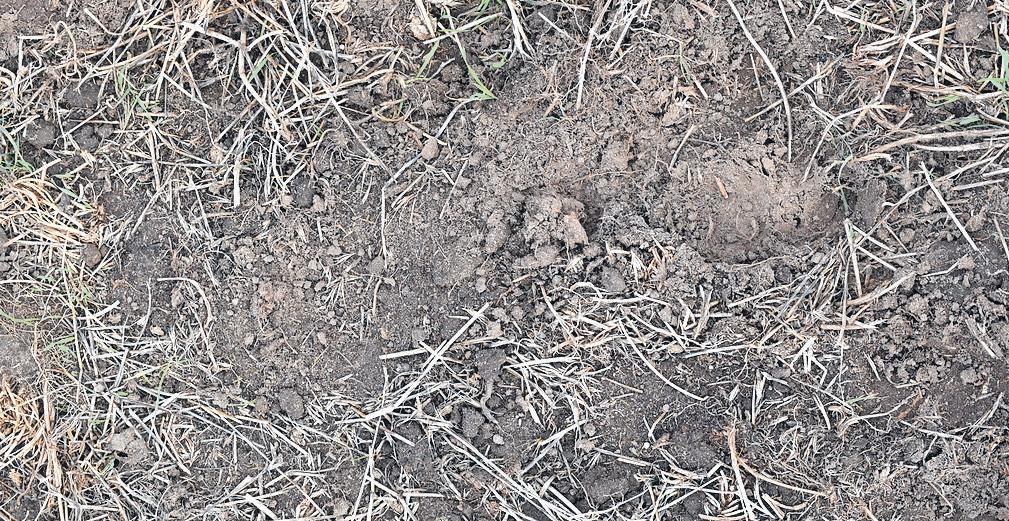
“The 1982 drought was a one-season drought, this has been for two years. We’ve had 2.5 months of rainfall in 21 months.”
“The first year you run down your fodder supplies and cash supplies and the second year you start borrowing money.”
“We’ve had to re-sow 100 per cent of our farm this year because all the perennial ryegrass died.
“That’s never happened before. We’re buying four B-double loads of hay a week, plus we’re sourcing cotton seeds and almond hulls as well as a grain mix.
“The outflow of money to keep animals alive and fed well and producing well is enormous.”
Brendan has always taken a strategic approach to farming.
“A good farmer does it for the right reasons,” he said.
“These days a successful farmer has to be a good manager of people.
“I can’t do this without people to rally behind the strategic direction and have the buy-in and enthusiasm to want to do it.”
Over time, Brendan has followed the philosophy of taking opportunities as they arise, continually producing the best possible product, being a farm where people are proud and happy to work, and being a good example of best practice so that the community can see dairy farmers care about their animals, their people and the environment.
He wants Australia to remain self-sufficient in its food supply.
“That’s one of the main things a country can do to protect itself so we’re not at the whims of other countries if things get bad,” Brendan said.
“The reason I do it is because I really enjoy producing a high-quality nutritious product, I love the fact that it’s an outdoors lifestyle that is different at all times of the year, and a love of animals.
“Farmers are essential.”



BY RICK BAYNE
James Maxwell arrived in south-west Victoria in 2010, Andy Powell was one of the first people to welcome him.
“Andy was one of the first people I met down here through the Port Campbell Dairy Discussion Group,” James said.
“He was one of the most approachable people in the community for people who had come in from outside, and also the most generous with his time.”
In December 2018, James left his job in field services to work alongside Andy on the Powell family farm at Cooriemungle.
Andy’s father Ross (Po) was stepping back and James came onboard as assistant manager with plans to eventually buy into the business.
The move was designed to help Andy maintain his interests off-farm while running the business and raising a family.
All that changed in April 2019 when Ross, 71, and Andy, 32, both experienced Port Campbell surf lifesavers, died while trying to rescue a tourist washed out to sea near the Twelve Apostles.
Family, friends and the community were devastated, but the cows still needed to be milked and James was there to help out.
“It was hard, but at the same time, the family wanted it to continue as a dairy farm, and I didn’t want to let them down,” he said.
James stayed on to support Ross’s widow Val and Andy’s widow Amber during the transition and took over as farm manager under new owners in October 2019.
“Andy was a really close mate and both he and Po meant a lot to a lot of people,” he said.
“Those first 12 months were really hard. There were little daily reminders all over the farm.
“They wrote their names in nearly every bit of concrete they poured.
“I’d get frustrated and stressed with every problem because you’d know that wouldn’t happen if they were here. They had 70 years’ knowledge of the farm and knew it intimately.
“It was a difficult, challenging time, but I’ll never forget them.”
Fulfilling the family’s wishes for the land to continue as a dairy farm, new private investor


owners took over in October 2019 and established the corporate-run Cooriemungle Operations.
The corporate entity also runs other dairy farms, sheep and cropping farms and horticulture.
James had been destined for a career in dairy — though getting there was a roundabout journey.
Raised on a dairy farm at Cohuna, after completing a Bachelor of Ag Science at the University of Melbourne, James tried working in a few different industries, but eventually found out he really enjoyed dairy farming.
“I went full circle back to it,” he said.
Apart from Ross and Andy, he had many good mentors along the way, including Shawn and Tracey Hollingsworth at Kerang and Pat and Michelle Quinn in northern Victoria.
In 2010, he moved to the south-west to take on a management role with a corporate farm.
His now wife Penny’s family was from the region, and his sister Erin Gardiner was a local

vet now married to a dairy farmer.
“I found it totally different and very challenging,” James said.
“I didn’t value the network I had in northern Victoria until I didn’t have it. Up there I knew who to call to fix anything, but I had to rebuild that network all over again.”
He also found that dairy farming wasn’t necessarily the same in different locations.
“Coming from northern Victoria to here — it’s the same product in the vat, but getting it there was so different.
“I was managing perennial ryegrasses instead of annuals. I came from a PMR or TMR system to a perennial ryegrass system which I hadn’t had any experience with.
“There were different ways to manage tracks, different little strategies to avoid having lame cows and get the right outcomes.”
The Port Campbell Dairy Discussion Group was a lifeline.
“It was the first place I got to meet people outside of shops,” James said.
It was also where he got to meet Andy, who was later recruited by James’s school teacher wife Penny to contribute to the Timboon P-12 agriculture program.
The farm has grown under the new owners; the herd is up from 480 to 650 and a new 60-unit rotary dairy was commissioned in June 2023.
Two neighbouring farms were purchased, bringing it to about 550 hectares.
“We’re working towards better utilisation of the land and hope to expand further in the future,” James said.
A new feedpad is being built — which James describes as logical for a herd this size — and a clear-roof shelter is on the agenda.
The owners have sights set on milking 1000 cows.
“At the moment we have a one-herd system, but with future growth, we will probably have to look at a split herd,” James said.
“I’m trying to avoid that because it creates more work, but eventually, we will need to.”
In September 2022, James took over management of the entity’s Eastern Creek Road farm, which has a similar 60-unit rotary dairy and milks nearly 500 cows.
The two farms have a combined staff of eight, no longer relying on backpackers for help.
“We’ve had good backpackers, but also some bad experiences, so I’d rather have a good local


team and do it ourselves,” James said.
“We have a really good system in place and our team concentrates on feeding, milking and caring for the animals, and we have a good network of contractors.”
They share milking duties in the automated one-person dairy, with staff only milking about five times a week.
James usually milks once a week to keep an eye on the cows.
“We work on people’s strengths to make it an enjoyable workplace,” he said.
Staff have recently undergone calf rearing training to ensure everyone operates the same way.
“Everyone is on board with feeding colostrum within the right timeframe for it to be effective and we’re seeing great results,” James said.
The farm has split calving, but if it reverted to a seasonal system, they would look at introducing a three in two days milking program.
James now takes a bigger picture overview of the farm, though he still likes to work with the cows.
“I like to have happy, relaxed animals with lots of grass,” he said.
“Managing is challenging mentally, and it’s exciting when you get good results.”
The farm has been progressing well, but like all businesses in south-west Victoria, has suffered due to the drought.
“We had been going well until recently,” James said.
“We rely on surface water run-off for our stock and dairy water and we’ve had none since winter 2023.
“We’re being very careful with what we have with both feed and water and asking favours from neighbours with water.
“We were very lucky we had a fantastic silage season last year, but the real risk for us is water.
The farm very recently expanded the milking platform by an additional 80ha, which has been a lifeline in the current challenging conditions.
“The farm is lightly stocked, which puts us in a good position for getting through this year,” James said.


James Maxwell is happy in his manager’s role at Cooriemungle Operations in southwest Victoria, but he’s intrigued by other farm set-ups.
Earlier this year, James was part of a three-day tour of Tasmania to visit leading dairy operations and agriculture research facilities.
The tour was organised by WestVic Dairy for the Port Campbell Dairy Discussion Group and supported by DemoDAIRY Foundation.
James had been on earlier tours to New Zealand with the UDV in 2012 and to Mystery Creek Field Days with Saputo and he said these trips were a great way to experience new places and farming systems and meet like-minded people.
James noticed the popularity of sharefarming in Tasmania with young farmers using the model to work towards farm ownership.
“The highly structured and huge popularity of sharefarming in Tasmania was a key takeaway of the tour,” he said.
“We met three young dairy farmers that had been in the industry for five-plus years and had worked their way up to 50:50
sharefarming positions, two of which were on multiple farms simultaneously after starting from nothing.
“They’re making fantastic return on equity while growing the business for the farm owners.”
The group also visited one farm aiming to maintain dairy farm ownership in the community.
“We had the opportunity to meet and talk to people involved in the Circular Head Farms group that partner with young and enthusiastic farmers to generate wealth for both parties,” James said.
“They use a four-step sharefarming model adapted from NZ and that gave people the opportunity to achieve farm ownership.”
James manages the Cooriemungle Operations farm, along with a second nearby farm for the corporate entity, on a salary with a profit-sharing incentive.
“I get rewarded for a more profitable business,” he said.
“I enjoy dairy farming with modern facilities and infrastructure and creating a sustainable workplace where people want to be.”

Continued from page 3
Another solid rock has been long-time employee Joel Kirkman, who has worked on the farm for 16 years, now supported by a parttime milker covering four milkings per week.
Joel takes care of pasture management and Sarah oversees the livestock.
Anything under irrigation is put into perennials. Annuals are used on the dryland and brassicas and lucerne at the outpaddock for silage.
Paddocks are renovated through summer crops and then put back to perennials. They usually grow 10ha of summer crops, but put in extra this year.
“We usually do 1200 rolls of silage, but only did just over 600, so we needed extra summer crops to try to fill the gap.”
Most years Sarah will buy one load of vetch hay — this year she’s had seven and the prices are up.
“Last year hay was expensive, but then we’ve had another bad harvest, so it’s now very expensive and getting hard to find.
“We’re hoping for the usual Anzac Day autumn break. If we get it too late, it will be too cold and the grass will struggle to grow.
“Everyone is in the same boat and struggling in this part of the state.”
Sarah has sold her small beef herd and any dairy cows that aren’t carrying themselves will be gone.
“You can’t afford to buy hay to feed animals that aren’t pulling their weight,” she said.
“You have to make a choice — do you cut production back or feed them through it. I’d rather continue feeding them well.
“If I don’t feed them well now, they will struggle to get back in calf.
“I’d rather spend the money and keep the weight on them.”
Breeding and raising calves are Sarah’s favourite parts of farming.
“We’d be classed as more of a type herd, but we’re trying to keep up production.
“I breed for longevity and an all-round cow that milks well and still looks good. I want the golden cow that we’re all trying to breed.”
The low-lying 15 double-up dairy was built by Steve, who wasn’t a tall man, and even a basic six-footer has to duck to enter.
Cup removers were added a few years ago, which has made life much easier.
“We’ve gone from a two-person dairy to a one-person dairy which has freed up a lot of labour,” Sarah said.
“After Dad passed away, I remember doing nine to 10 months without missing a milking because there had to be two of us.
“I don’t have to do every milking any more, which means you can manage a bit more instead of just doing the work.”
A new robotic calf feeder has also reduced pressure and saved labour.
Sarah recently hosted a World Jersey Conference tour, enjoying showcasing Australian Jerseys in the hope of increasing export opportunities of embryos or heifers.
She remains a big fan of the breed.
“I appreciate the size of Jerseys. I’m not very tall and here by myself sometimes, so having a smaller cow is much more manageable, and it’s easier when calving,” she said.
“They’re also a more economical breed.”
Steve was milking 230 to 240, Sarah has pushed it to 270 to 280 this year.
“We’re getting to our limit with the size of the land, dairy and yards, but my partner might come here in a few years, and we will look at a new dairy and adding some more land if we can.”



